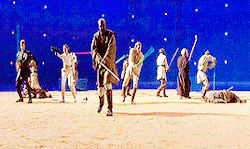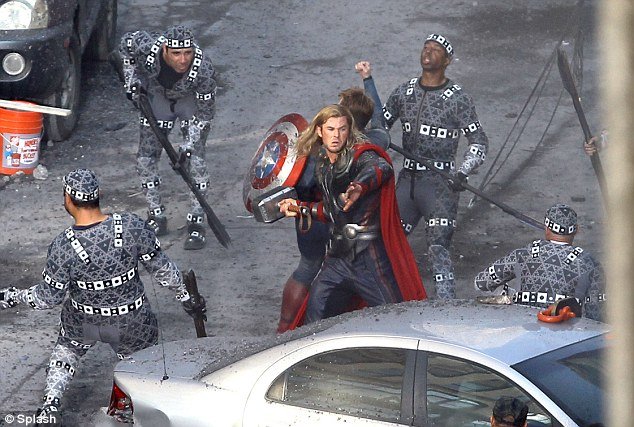Right.It is human.
It is quite irrational, and human to be so. And makes no sense, as humans are want to do.
Right.It is human.
It is quite irrational, and human to be so. And makes no sense, as humans are want to do.
Glad it does to someone.Makes perfect sense.
I was always wondering this, whether LDS has any appeal outside of the Trek fandom?
As the seasons have gone on, I think it's established its world and characters well enough to be watched by those not of The Body.I was always wondering this, whether LDS has any appeal outside of the Trek fandom?
What did he say? I can only find references to Jurassic Park when he said he had "become extinct"I blame CGI. Phil Tippet was right.
"The computer wants to fuck you." Basically, it's easy to use a computer but also looses the weight of working with physical objects.What did he say? I can only find references to Jurassic Park when he said he had "become extinct"
The way the Star Trek franchise continues to shoot itself in the foot is part of the charm at this point, honestly.

Everyone should watch this whole series. But since we have invoked the Nolan:There is an argument that CGI is NOT capable of conveying certain emotions within a film medium in the same way practical effects can. For example, can CGI be scary? Can a CGI creation create the same amount of fear that practical effects can when watching a film or TV show? Or do you lose something in the suspension of disbelief when it’s CGI.
I remember this being a debate when the were doing the 2011 prequel to The Thing. The director of that movie promised practical effects and then the movie was taken away from him for the final cut and the studio demanded CGI. And many people feel the 1980s effects for John Carpenter’s film are far more disturbing and scary than the CGI.
If I remember correctly, this sort of thinking is part of the reason Christopher Nolan tries to keep things as practical as possible on his films, because it helps sell the situation as being plausible the more things seem “real” and not actors reacting to a green-screen.
Which is why I care little over FX.And good film making will produce an emotional response no matter the quality of the FX.
Which is why I care little over FX.
No one has argued there should be no CGI whatsoever, not even Nolan. But what he has argued is that it moves beyond a tool that enhances a film and turns what you have into an animated film at a certain point if there's no underlying practical filmmaking, since the audience can tell the difference between animation and flesh and blood characters that exist within a real environment.Why would you lose suspension of disbelief by the very nature of something being CG? There are a million CG FX in almost everything we see that nobody ever notices.


Me too, one reason why Babylon 5 remains my absolutely favorite sci-fi show.
For an example of what Nolan is speaking about, take the Star Wars prequels. The CGI in those movies are used not only to enhance the fantastical elements of the story, but to create the worlds in which the characters inhabit, and a lot of times there's nothing practical shot as the basis for the CGI to be used as a tool to enhance. That's why it feels so fake and animated so often, and like the characters don't inhabit a real world, with real structurers, but are pretending against blue-screens, tennis balls, and dots on walls.

This is an extraordinary series of videos.Everyone should watch this whole series. But since we have invoked the Nolan:
Why would you lose suspension of disbelief by the very nature of something being CG? There are a million CG FX in almost everything we see that nobody ever notices.
I always remember when the first Marvel Avengers movie came out and some people where complaining about the Hulk FX in the scene when he's chasing Black Widow down the hall. ILM's response was something along the lines of "Oh? The 12 foot green monster didn't look like a real 12 foot green monster to you? Did you notice that the human woman that he was chasing, you know, one of the most recognizable actresses in the world, was ALSO CG?"
Go play Alien: Isolation and tell me if CG can be scary.
I think the "CG can never replace a practical model" debate should have been settled with Rogue One. (At least.) Maybe you need ILM and a Disney Star Wars sized budget. But then I think Godzilla Minus One just settled that question as well.
Crappy FX will be crappy FX if they are done with CG or with "practical". And good film making will produce an emotional response no matter the quality of the FX.
We use essential cookies to make this site work, and optional cookies to enhance your experience.
